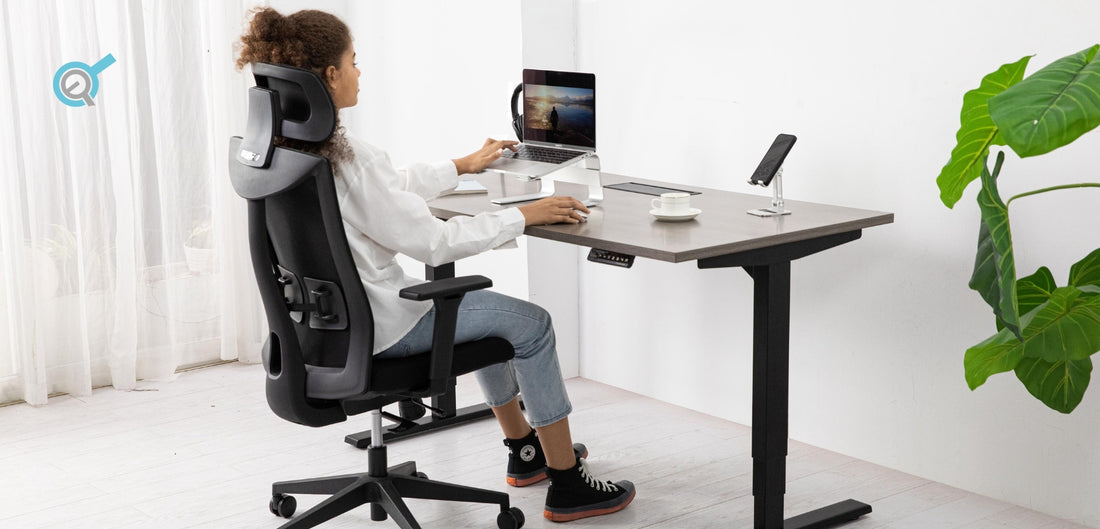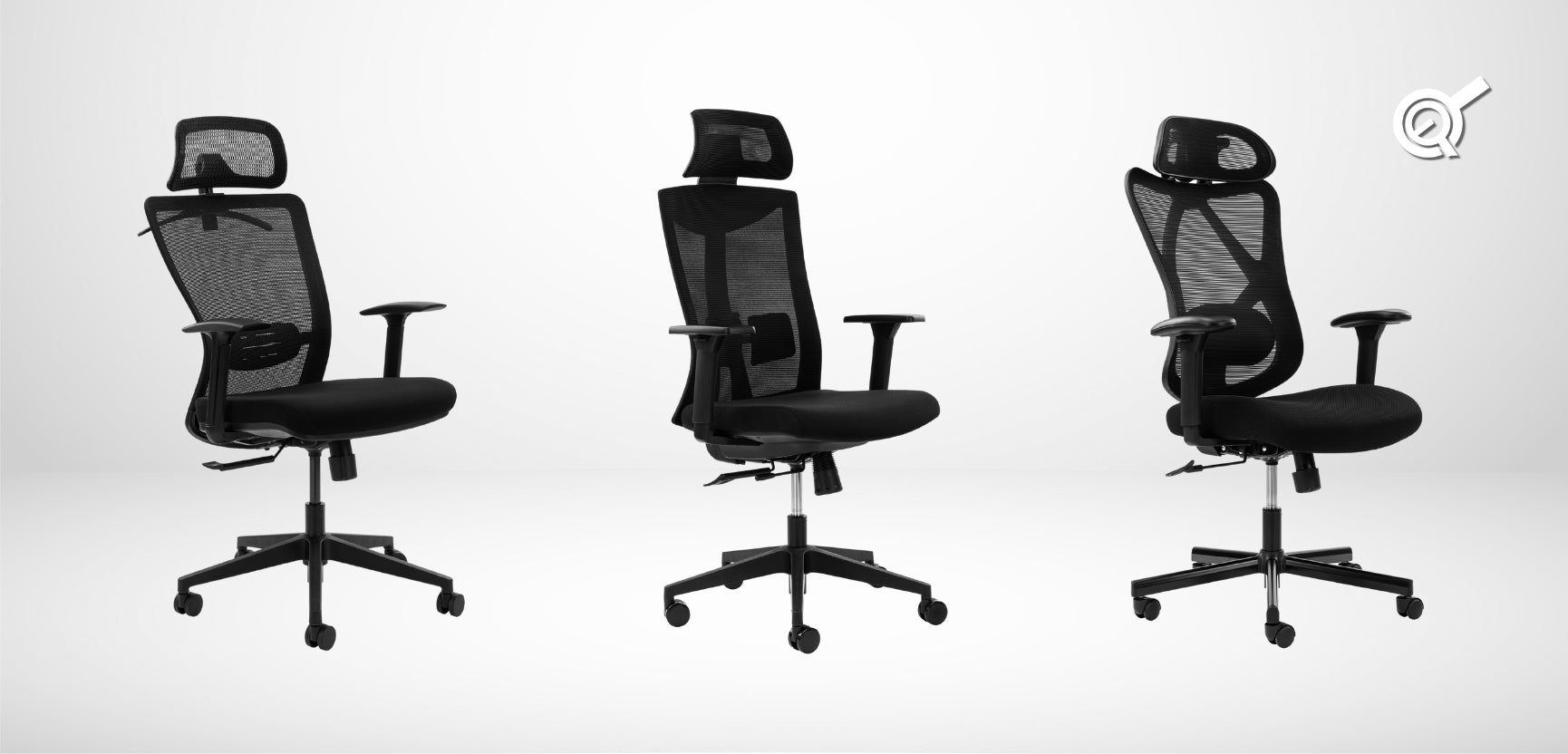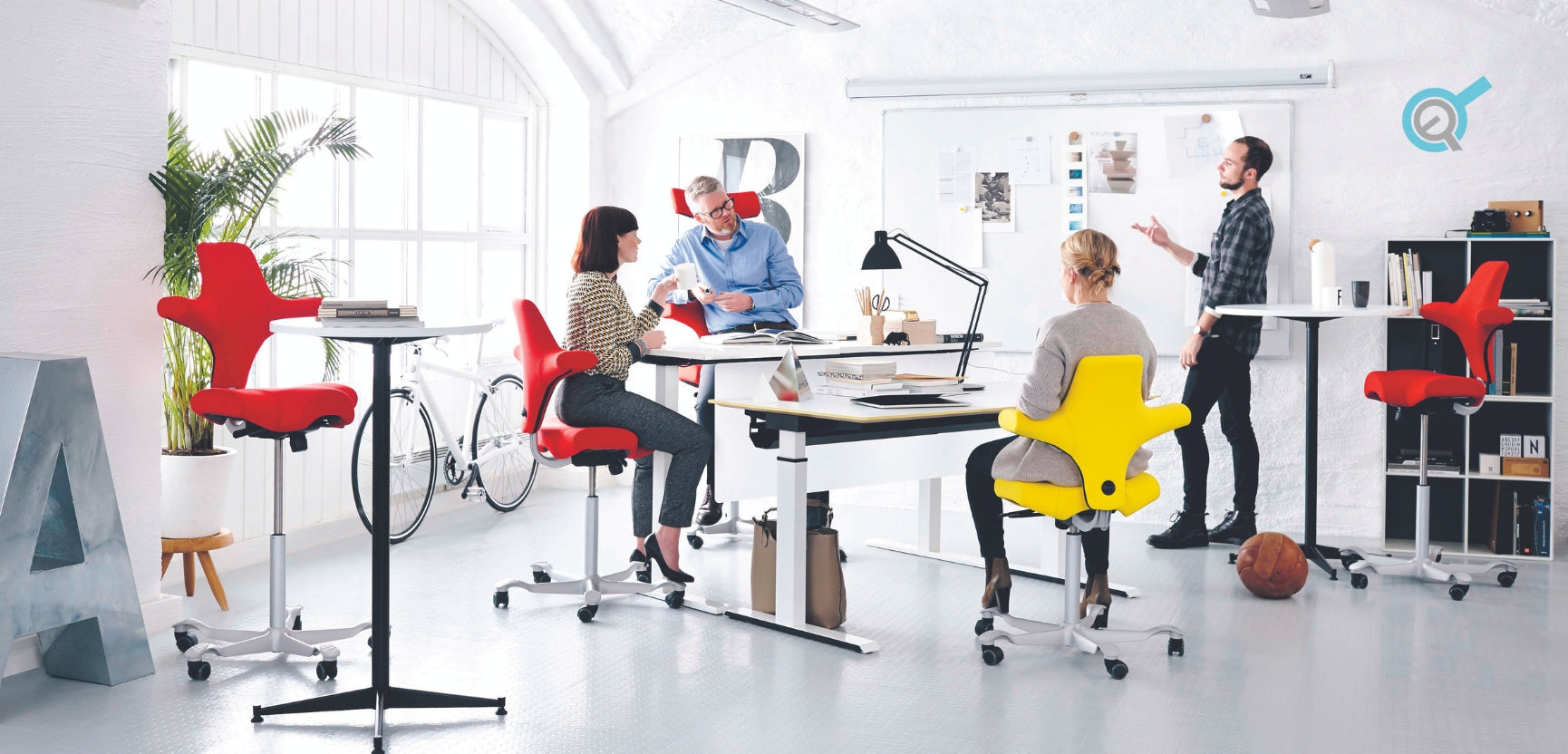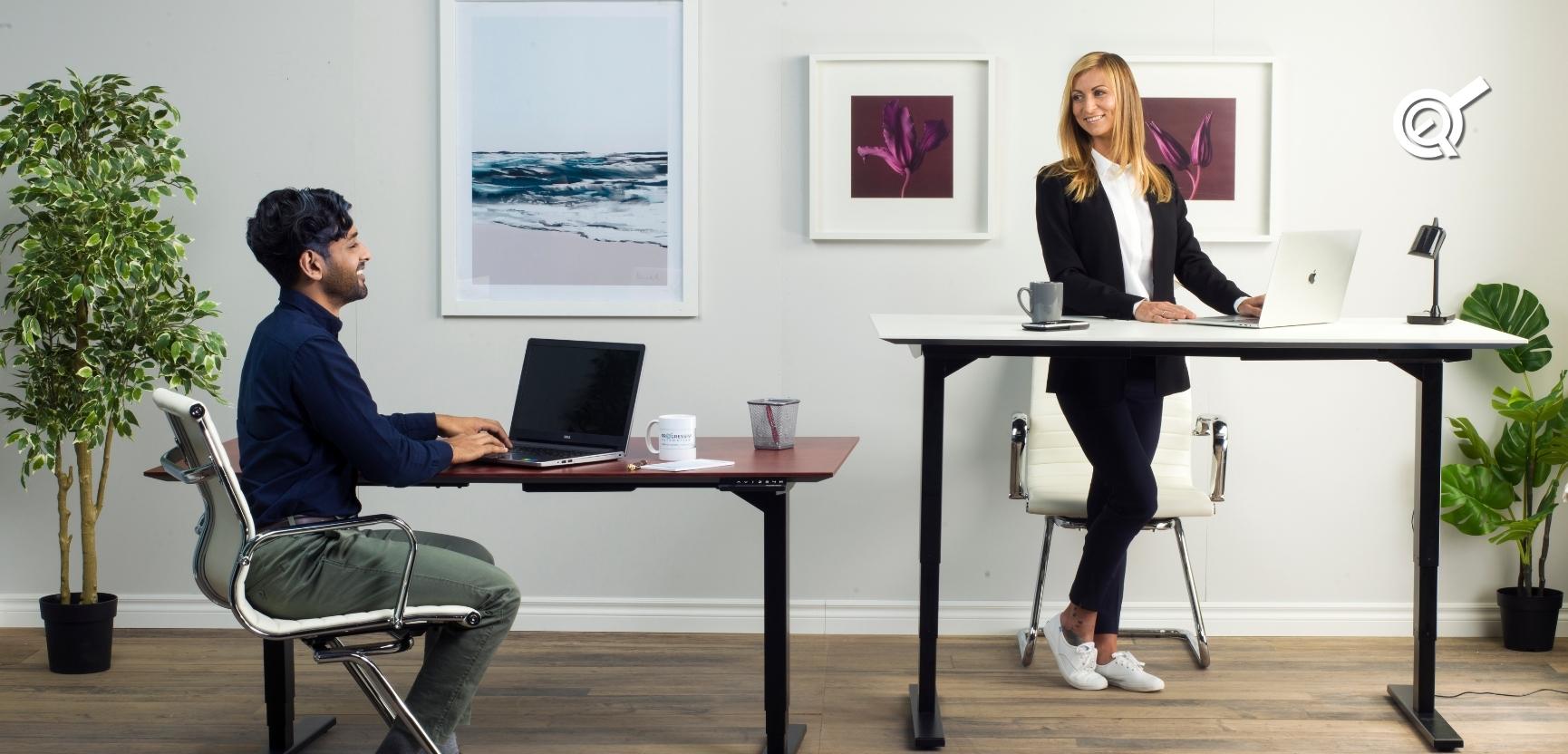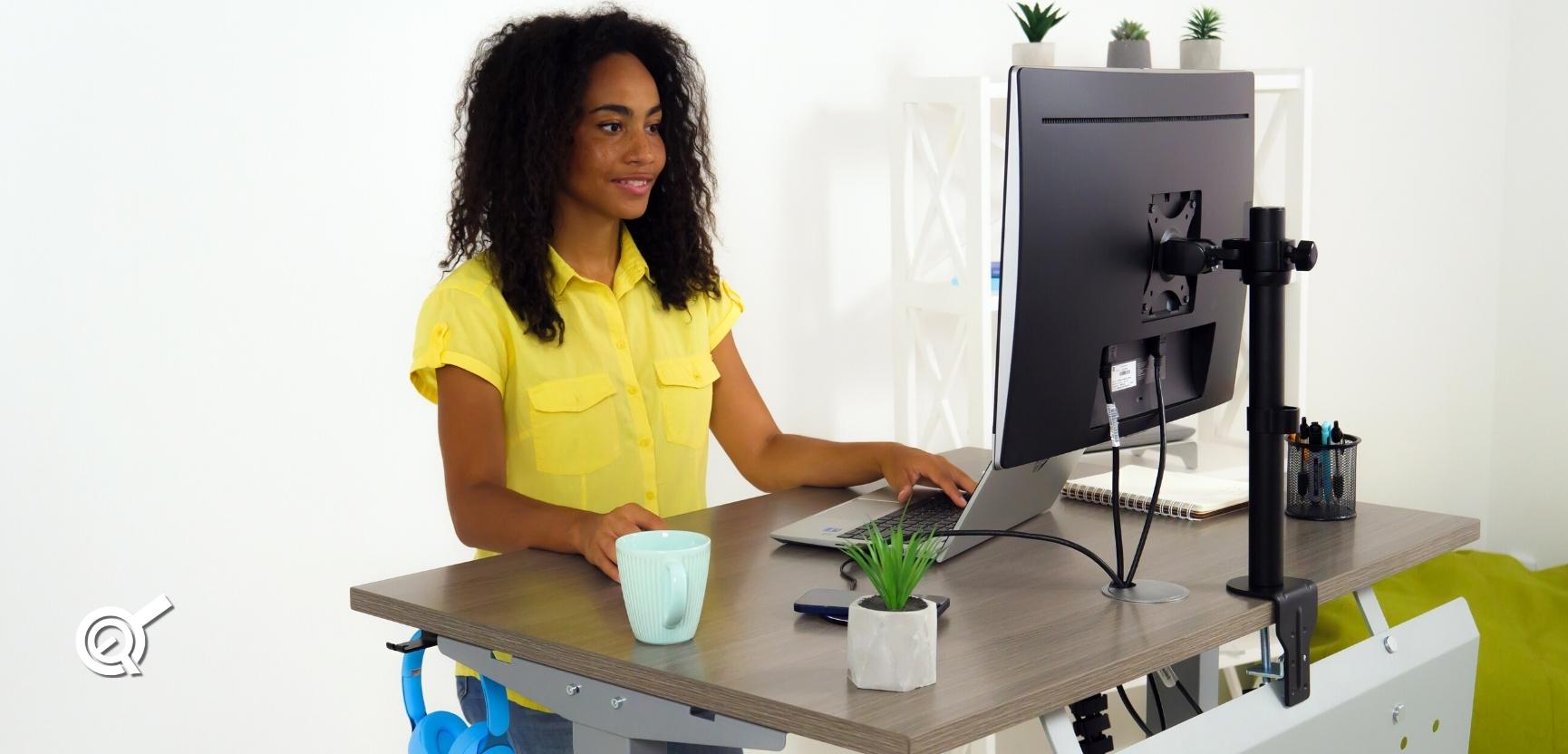In today's fast-paced world, many people spend a significant portion of their day sitting at a desk, leading to poor posture, back pain, and other musculoskeletal issues. To address these concerns, two alternatives have recently emerged in the office furniture market - ergonomic office chairs and standing desks. We'll explore the benefits and drawbacks of each in this article, helping you decide what option to go with to create your healthy and comfortable work style.
The Benefits of an Ergonomic Office Chair
Ergonomic office chairs are designed to provide optimal comfort and support while minimizing the risks of discomfort caused by prolonged sitting. Typically, this type of chairs has several key features that can help improve your posture and reduce pain, thus, increasing productivity.
Seat Height and Depth Adjustment
The adjustable seat height and depth enable you to adjust the seat to your leg length, maintain proper alignment of the hips and knees, and alleviate pressure on the thighs. Ideally, when seated in an ergonomic chair, your feet should be flat on the ground with your knees bent at a 90-degree angle, and there should be a gap of about two fingers' width between the back of your knees and the edge of the seat. This helps reduce pressure on the lower back, minimize discomfort, improve circulation, and promote good posture.

Adaptable Backrest and Tilt Adjustment
Adjustable backrest accommodates the spine's natural curves and offers adequate lumbar support, reducing strain on the back muscles and preventing lower back pain.

As to the tilt adjustment, it allows you to modify the seat and backrest angle to ensure correct posture and lessen pressure on the back. Also, it helps prevent slouching and encourages a healthy sitting position. With the tilt properly adjusted, you should be able to lean back slightly, have your feet still flat on the ground, and feel as if you're ready to spend some time in this position.
Swivel Base and Breathable Material
The swivel base ensures you can turn the chair without straining your back or neck, which is essential to eliminate the risk of injury and promote easy movement in the workspace.
The quality material that lets the air easily come through keeps users cool and comfortable throughout the day, preventing sweating and discomfort. When choosing an ergonomic chair, look for materials such as mesh or perforated leather that allow air to circulate. By the way of example, our premium ergonomic chair Apex Glyder features a fabric seat and mesh back that makes this chair durable and suitable for any workspace.
Movable Casters
Casters allow for easy and smooth movement across the floor, making it easy to reach things on the desk without straining or overreaching. However, it's important to consider the type of flooring in your workspace and choose casters that will work well on that surface.

Weight Capacity
Weight capacity ensures the chair can support users' weight without causing discomfort or breaking. This is particularly important for heavier users or those who sit for long time.
Although ergonomic office chairs are designed to improve posture and reduce discomfort, there are still some potential drawbacks to consider:
- Cost - Ergonomic chairs can be more expensive than traditional office chairs, which can make it difficult for some businesses or individuals to afford them.
- Adjustment - While most ergonomic chairs are adjustable, they may not fit everyone's body type perfectly, and it can take time to adjust the chair to the personal needs.
- Comfort - Some people may find ergonomic chairs quite awkward, especially if they are not used to sitting with proper posture. Additionally, some chairs may have features that are uncomfortable for certain users, such as a high backrest or firm lumbar support.
- Maintenance - Ergonomic chairs may require more maintenance than traditional office chairs. For example, some chairs may have more moving parts that need to be lubricated or adjusted periodically.
- Mobility - While most ergonomic chairs are a no-brainer to move thanks to caster wheels, some models may be bulky and heavy, making them difficult to move around the office or to transport to other locations.
- Complexity - Ergonomic office chairs may have a variety of adjustments and settings, which can be confusing for some users to navigate and prevent them from enjoying the chair's useful features.
The Benefits of Standing at Work
Shifting from sitting to standing can contribute to a healthier, more active lifestyle and reduce the risk of several health issues related to long hours of sitting. Here are some of the key benefits and considerations of working standing:
Increased Energy and Focus
Standing promotes increased energy and focus compared to sitting. When standing, your body is more engaged and active, leading to better blood flow and oxygenation to the brain, which helps improve concentration and mental clarity, boosting productivity and efficiency.

Reduced Risk of Health Issues
Prolonged sitting has been linked to several health problems, including obesity, diabetes, and cardiovascular diseases. Conversely, working at standing desks can help reduce the risk of these conditions by enhancing physical activity and calorie burning. Additionally, standing can help improve posture, minimize back pain, and reduce the chance of other musculoskeletal issues development.
Improved Circulation
When standing, blood flow goes freely throughout the body, reducing the risk of swelling and varicose veins. Standing also encourages more movement and stretching, which can help prevent stiffness and improve flexibility.

Increased Calorie Burn
Besides, standing can help burn more calories than sitting, leading to potential weight loss and improved overall health. Studies show that standing can actually burn up to 50 more calories per hour than sitting.
While working standing can have many benefits, standing for prolonged periods may cause fatigue and discomfort in the feet, legs, and lower back. Therefore, taking breaks and switching between sitting and standing is essential to reduce the risk of any uncomfortable feelings.
Also, standing can be more physically demanding than sitting, leading to difficulty concentrating for some people. Thus, it's essential to listen to your body and switch between sitting and standing as needed to maintain focus and productivity.
FAQ
How much standing is too much?
Standing for extended periods can lead to discomfort and health problems, including back pain, leg swelling, and joint stiffness. However, the amount of standing that is considered "too much" can vary depending on individual factors such as age, health status, and fitness level. As a general guideline, it is recommended to take breaks from standing every 30 minutes to avoid excessive stress on the body.
Is a standing desk good for you?
Standing desks have become popular in recent years due to their potential health benefits. Studies have shown that using a standing desk can reduce the risk of weight gain, obesity, and heart disease. Additionally, standing desks can improve posture, reduce back pain, and increase energy levels. However, it is important to note that standing for prolonged periods may also cause discomfort and health problems. Therefore, it is recommended to switch between sitting and standing throughout the workday.
Is it better to stand or sit at work?
There is no straightforward answer to this question as both sitting and standing have their advantages and disadvantages. Sitting for prolonged periods can lead to health problems such as obesity, diabetes, and cardiovascular disease. On the other hand, standing for long periods can cause foot pain, joint stiffness, and fatigue. Therefore, it is recommended to switch between sitting and standing throughout the workday to avoid prolonged periods of either. Additionally, incorporating movement and exercise into your daily routine can also help improve overall health and well-being.
Wrapping Up
When it comes to choosing between standing vs sitting at work, there's no one-size-fits-all solution.
Both options have benefits and drawbacks, and the best choice depends on individual preferences, work environment, and personal health considerations. Ergonomic chairs provide optimal comfort and support while minimizing the risks associated with extended sitting. Conversely, working at standing desks helps promote a healthier and more active lifestyle, reducing the risk of several health problems related to sitting for a long time.
That said, some people may find that an ergonomic office chair provides the necessary comfort and support, while others may prefer to work standing for the health benefits. One thing is certain- listening to your body and adjusting the workspace to optimize health and productivity is critical. Learn more about developing a healthy workstyle. And don’t hesitate to contact us if you have any questions about adjustable standing desks and ergonomic office chairs. Our experts are always ready to share their knowledge with you!
sales@progressivedesk.com | 1-800-828-9414


